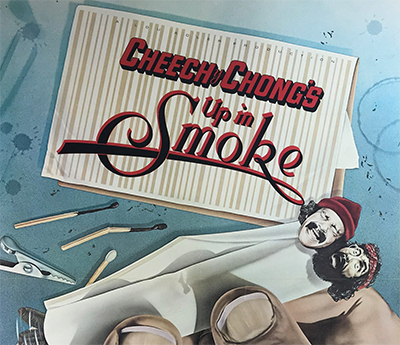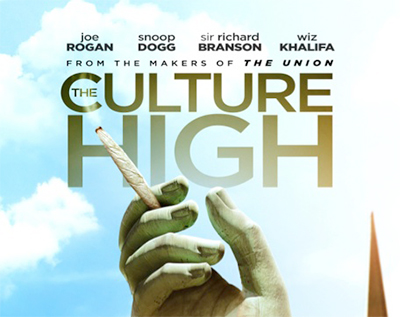Cannabis culture has long been intertwined with the world of entertainment, particularly in movies and TV shows. Whether as a subtle backdrop or the main plotline, cannabis often finds its way into stories that reflect societal views, break taboos, and celebrate the lifestyle associated with it. With the growing legalization and acceptance of cannabis around the world, film and television have become a vital medium for exploring and normalizing its use. Below, we will go over how cannabis is portrayed on screen and some of the most iconic films and TV shows that have helped shape and define cannabis culture.
The Early Days of Cannabis in Film: From Cautionary Tales to Counterculture
 Cannabis made its debut in film in the early 20th century, though not in the way we see it today. During the 1930s, at the height of the prohibition era, cannabis was often depicted negatively in what are now considered propaganda films. The most infamous example is “Reefer Madness” (1936). This black-and-white movie was originally produced as an educational tool to warn against the dangers of cannabis, painting it as a gateway drug that led to crime, violence, and insanity.
Cannabis made its debut in film in the early 20th century, though not in the way we see it today. During the 1930s, at the height of the prohibition era, cannabis was often depicted negatively in what are now considered propaganda films. The most infamous example is “Reefer Madness” (1936). This black-and-white movie was originally produced as an educational tool to warn against the dangers of cannabis, painting it as a gateway drug that led to crime, violence, and insanity.
While the film is now widely regarded as campy and over-the-top, its exaggerated portrayal reflects the prevailing attitudes of the time. What makes “Reefer Madness” notable today is its ironic status as a cult classic, watched by modern audiences with a sense of humor rather than fear. It’s often viewed as a parody, showing how far public perception of cannabis has evolved.
As cannabis became a symbol of rebellion and counterculture during the 1960s and 1970s, its portrayal in film began to change. Films like “Easy Rider” (1969) and “Cheech & Chong’s Up in Smoke” (1978) helped solidify cannabis as a symbol of freedom, peace, and an alternative way of life. In these films, cannabis was no longer just a harmful drug but a part of a lifestyle centered on creativity, relaxation, and challenging the status quo.
Comedy and Cannabis: The Stoner Movie Genre
 If there’s one genre that has embraced cannabis culture more than any other, it’s comedy. The “stoner movie” has become a staple in modern filmmaking, often blending humor, absurdity, and cannabis use to create films that are entertaining and lighthearted.
If there’s one genre that has embraced cannabis culture more than any other, it’s comedy. The “stoner movie” has become a staple in modern filmmaking, often blending humor, absurdity, and cannabis use to create films that are entertaining and lighthearted.
At the heart of the stoner movie genre is “Cheech & Chong”, a comedy duo who are arguably the pioneers of the modern stoner comedy. Their film, “Up in Smoke”, is widely considered one of the first movies to focus on cannabis use in a humorous, lighthearted way. The film follows two bumbling stoners as they navigate life’s challenges, usually with cannabis at the center of their misadventures. It set the tone for many stoner comedies that followed, showing cannabis as something that could bring laughter, relaxation, and sometimes chaos.
Other classic films like “Dazed and Confused” (1993) and “Half Baked” (1998) continued this trend. “Dazed and Confused“, directed by Richard Linklater, takes place in the 1970s and portrays high school students embracing cannabis as part of their coming-of-age experience. The film doesn’t demonize cannabis use but instead uses it as a tool to explore friendship, rebellion, and the quest for identity in youth.
“Half Baked,” starring Dave Chappelle, follows the misadventures of a group of friends who are brought together by their love of cannabis and their desire to free their friend from jail. The film is beloved for its quirky characters and humorous look at cannabis culture, appealing to both casual viewers and cannabis enthusiasts alike.
Another iconic entry in the genre is “Pineapple Express” (2008). Starring Seth Rogen and James Franco, this action-comedy pairs cannabis use with a ridiculous, over-the-top plot that combines crime, friendship, and, of course, plenty of weed. The film has become a staple of modern stoner cinema, beloved for its hilarious depiction of cannabis enthusiasts caught in outrageous situations.
Cannabis in TV: A Mainstream Presence
While cannabis-themed movies have played a major role in shaping cannabis culture, television has also become a powerful platform for its representation. In recent years, TV shows have embraced more nuanced, realistic portrayals of cannabis users, integrating them into broader storylines rather than relegating cannabis to the margins.
“Weeds” (2005-2012) was a groundbreaking show in many ways, offering a dark comedic take on the cannabis industry. The show follows Nancy Botwin, a widowed suburban mother who turns to selling cannabis to support her family. As the series progresses, it delves into the complexities of the cannabis trade, exploring everything from the underground market to legalization and corporate involvement. “Weeds” helped to break stereotypes around cannabis users, showing that people from all walks of life could be involved with cannabis—whether as consumers or businesspeople.
Following in its footsteps, shows like “Disjointed” (2017) have leaned into the humor and culture surrounding cannabis. Starring Kathy Bates as a dispensary owner, “Disjointed” mixes workplace comedy with cannabis culture, offering a fun and lighthearted look at the day-to-day operations of a cannabis business. Though the show wasn’t as critically acclaimed as other cannabis-centered series, it resonated with fans for its irreverent take on cannabis use and the industry.
Another standout TV show that has helped bring cannabis culture into mainstream storytelling is “Broad City” (2014-2019). Though not entirely focused on cannabis, the show features two best friends, Ilana and Abbi, navigating life in New York City—and cannabis is a natural part of their lives. The casual and normalized way in which cannabis use is depicted reflects a growing trend of portraying it as a routine part of life, rather than something illicit or taboo.
Documentaries: Real-Life Perspectives on Cannabis
 For those who want to dive deeper into the real-world implications of cannabis culture, there are plenty of documentaries that explore everything from legalization efforts to the science behind cannabis. These films provide insight into the changing landscape of cannabis use, its historical context, and the social and political factors that have influenced its rise in popularity.
For those who want to dive deeper into the real-world implications of cannabis culture, there are plenty of documentaries that explore everything from legalization efforts to the science behind cannabis. These films provide insight into the changing landscape of cannabis use, its historical context, and the social and political factors that have influenced its rise in popularity.
“The Culture High” (2014) is one such documentary. It offers a deep dive into the politics of cannabis prohibition, exploring why cannabis has been illegal for so long despite its widespread use. The film features interviews with advocates, doctors, and celebrities, providing a comprehensive look at the fight for legalization and the stigmas that persist around cannabis.
Another impactful documentary is “Weed” (2013) by CNN’s Dr. Sanjay Gupta. Though it focuses more on medical cannabis, its cultural relevance cannot be denied. The documentary helped to shift mainstream perspectives on cannabis, showing how it can be used responsibly and effectively in various contexts.
“Grass Is Greener” (2019), directed by Fab 5 Freddy, takes a look at the intersection of cannabis, music, and social justice. The film explores the role cannabis has played in shaping popular culture, especially in the worlds of jazz, hip-hop, and counterculture movements, while also delving into the racial disparities in cannabis-related arrests and convictions.
The Future of Cannabis on Screen
As cannabis continues to be legalized in more places and the stigma surrounding its use fades, we can expect to see even more nuanced and varied portrayals of cannabis culture in movies and TV shows. These portrayals are likely to move beyond the stoner comedy archetype and explore cannabis in a wide range of genres, from drama to science fiction.
Moreover, with cannabis becoming more mainstream, we may see characters who use cannabis integrated into all types of stories, just as we see characters drinking coffee or enjoying a glass of wine. Cannabis use is no longer confined to the fringes of society, and its representation on screen will continue to reflect that shift.
Conclusion
Movies and TV shows have played a crucial role in shaping public perceptions of cannabis, reflecting the evolving attitudes toward its use. From the early days of “Reefer Madness” to the modern stoner comedies and more serious explorations of cannabis culture, entertainment has both influenced and mirrored society’s changing views on cannabis. As we look to the future, the portrayal of cannabis in media is likely to grow more diverse, representing the broad spectrum of users and experiences that define modern cannabis culture.

